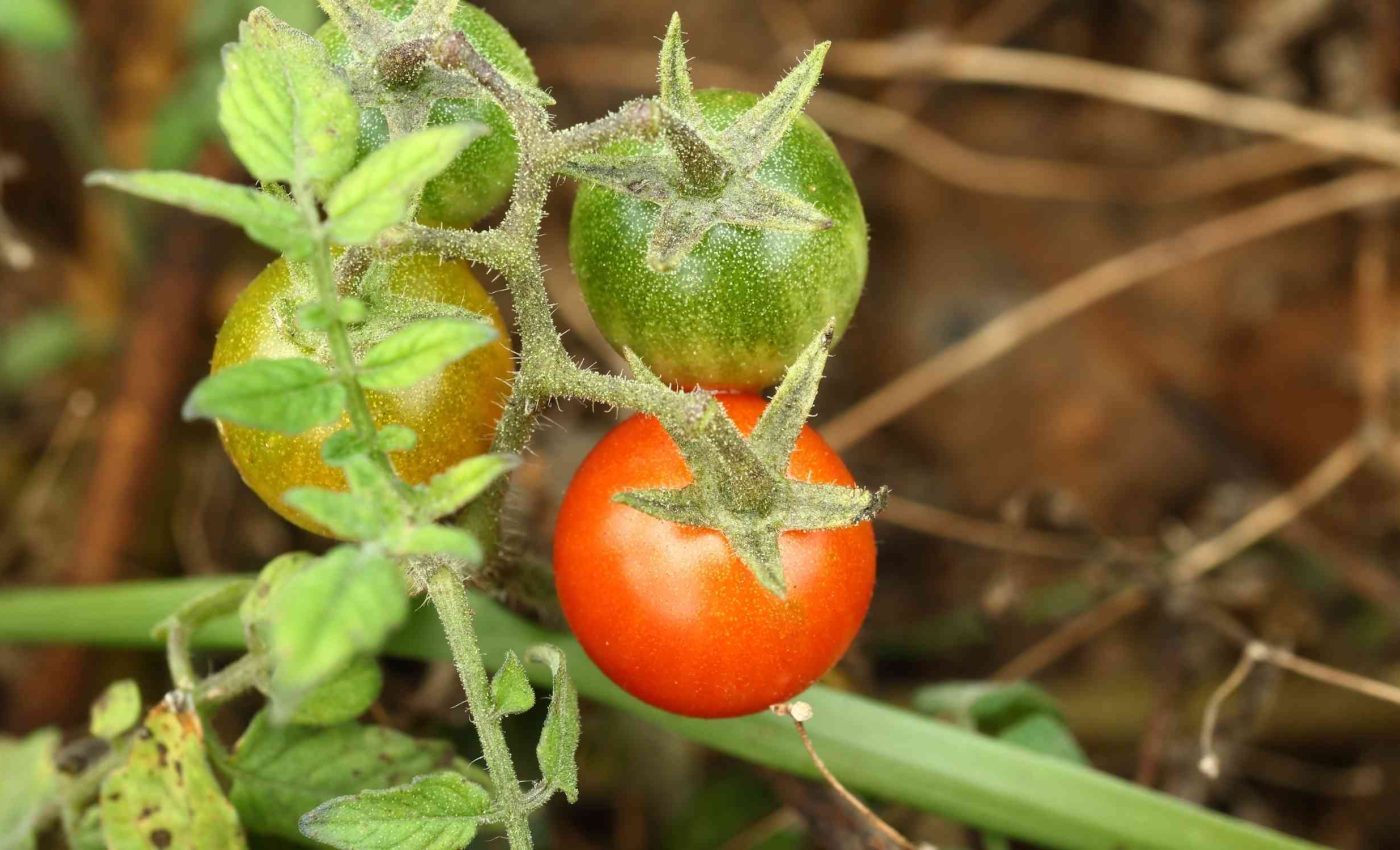
Scientists find a surprising case of 'reverse evolution' in wild tomatoes
Wild tomatoes rooted on the raw lava of Fernandina and Isabela Islands have done something biologists once filed under “nearly impossible,” reviving a molecular defense that disappeared from their relatives millions of years ago during species evolution.
The phenomenon has been traced to a tiny tweak in the plants’ chemistry, and it now stands as the clearest plant example of reverse evolution, the re‑emergence of an ancestral trait after a long dormancy.
Lead author Adam Jozwiak at the University of California, Riverside, working with colleagues from the Weizmann Institute, mapped the unexpected comeback.
Evolution of wild tomatoes
Wild tomatoes on the islands produce a mix of bitter chemicals that help protect them from insects and animals that might try to eat them.
On the youngest islands, the mix has shifted toward an older type of toxin usually found in eggplants, not modern tomatoes, showing that this ancient version can still work better under harsh conditions like lava soil and intense heat.
The change comes down to a single enzyme in the plant that decides how its natural defense chemicals are made.
By slightly altering this enzyme, the plant switches back to an older version of its toxin that had been lost for millions of years.
“Just four amino acids changed everything,” reported the study team, noting that the modified enzyme brought back the older, more aggressive version of the toxin. It wasn’t a random mutation, but a precise shift that reactivated a long-dormant chemical pathway.
Life on lava and sand
The western Galápagos islands are among the youngest in the chain, with rugged volcanic ground and almost no soil. Plants growing there face intense heat, limited nutrients, and constant threats from insects and animals.
In those conditions, bringing back a stronger chemical defense gives the tomatoes a better chance of surviving, and evolution seems to have reached into the plant’s genetic history instead of creating something entirely new.
When tomato evolution hits reverse
Although it was once assumed that lost traits almost never return, research shows that evolution can sometimes retrace its steps.
In some cases, structures that disappeared for millions of years have reappeared, such as larval stages in salamanders or wings in certain insects.
These reversals challenge the old idea that evolution always moves in one direction and suggest that dormant genetic pathways can be reactivated when conditions shift.
The tomato work tightens the evidence because stereochemistry can be measured atom by atom, making accidental convergence unlikely.
Lessons for crop science
Changing four amino acids in GAME8 inside greenhouse tobacco forced the host to synthesize the ancestral toxin, showing that minimal editing is enough to remodel an entire metabolic branch.
Researchers now wonder whether carefully steering stereochemistry could dial pest resistance up or down in other crops while avoiding off‑flavors that plague tomato breeders.
Island survey data hint at an evolutionary gradient: tomatoes on older eastern islands keep the modern toxin, central islands sit in the middle, and the youngest lava fields host plants in nearly full chemical retreat.
That pattern suggests evolution’s arrow is flexible, and under shifting climates crops might again reach backward for solutions thought obsolete.
How four amino acids changed the story
Most enzymes are highly specific, and even minor alterations can break them. But in this case, the GAME8 enzyme was surprisingly flexible.
By replacing just four amino acids in its active site, scientists restored the enzyme’s older behavior, allowing the plant to make the ancient version of its chemical defense again.
This kind of precise control over a plant’s internal chemistry is unusual and suggests that nature sometimes keeps old instructions ready to use when needed.
The researchers used molecular docking and structural models to predict which amino acids made the difference.
Lab tests confirmed their predictions, highlighting how small tweaks in sequence can flip a tomato plant’s entire chemical output.
This work also demonstrates how directed enzyme evolution, a common tool in biotechnology, occurs naturally under harsh selection pressures like those on the Galápagos lava fields.
Impacts beyond tomatoes
Tomatoes belong to the Solanaceae family, which includes peppers, potatoes, and tobacco. All of them produce related alkaloids, and this study suggests they might also hold buried chemical routes.
Understanding how GAME8 evolved can help scientists modify alkaloid profiles in related plants, potentially unlocking medicinal or agricultural uses with more precision.
Some glycoalkaloids are mildly toxic to humans, and breeders often try to reduce them. But with the ability to dial in the stereochemistry, it might be possible to keep the benefits while avoiding the downsides.
This also raises fresh questions for evolutionary theory, particularly around how often so-called “lost” traits are truly gone, or just waiting for the right trigger to come back.
The study is published in Nature Communications.
—–
Like what you read? Subscribe to our newsletter for engaging articles, exclusive content, and the latest updates.
Check us out on EarthSnap, a free app brought to you by Eric Ralls and Earth.com.
—–













